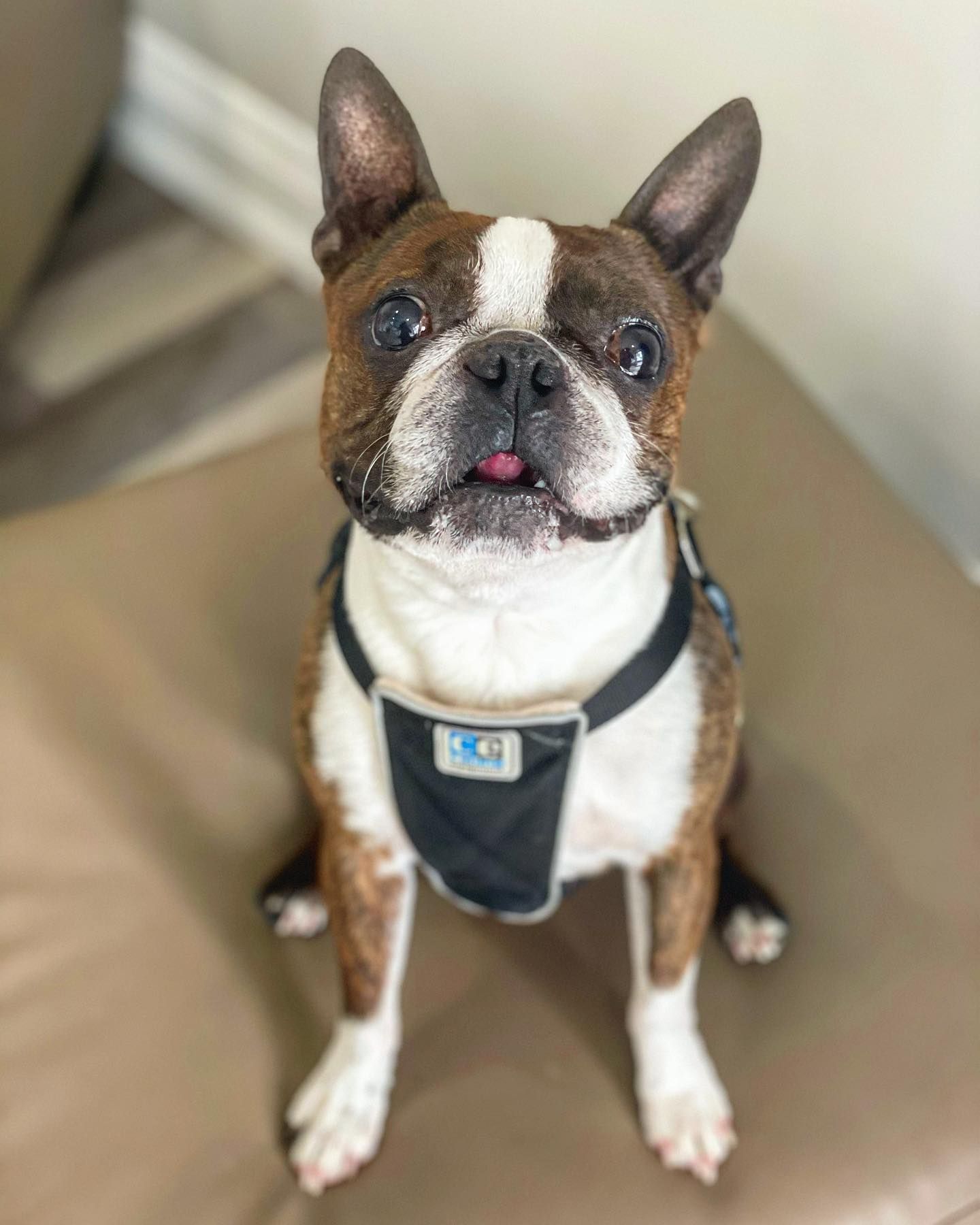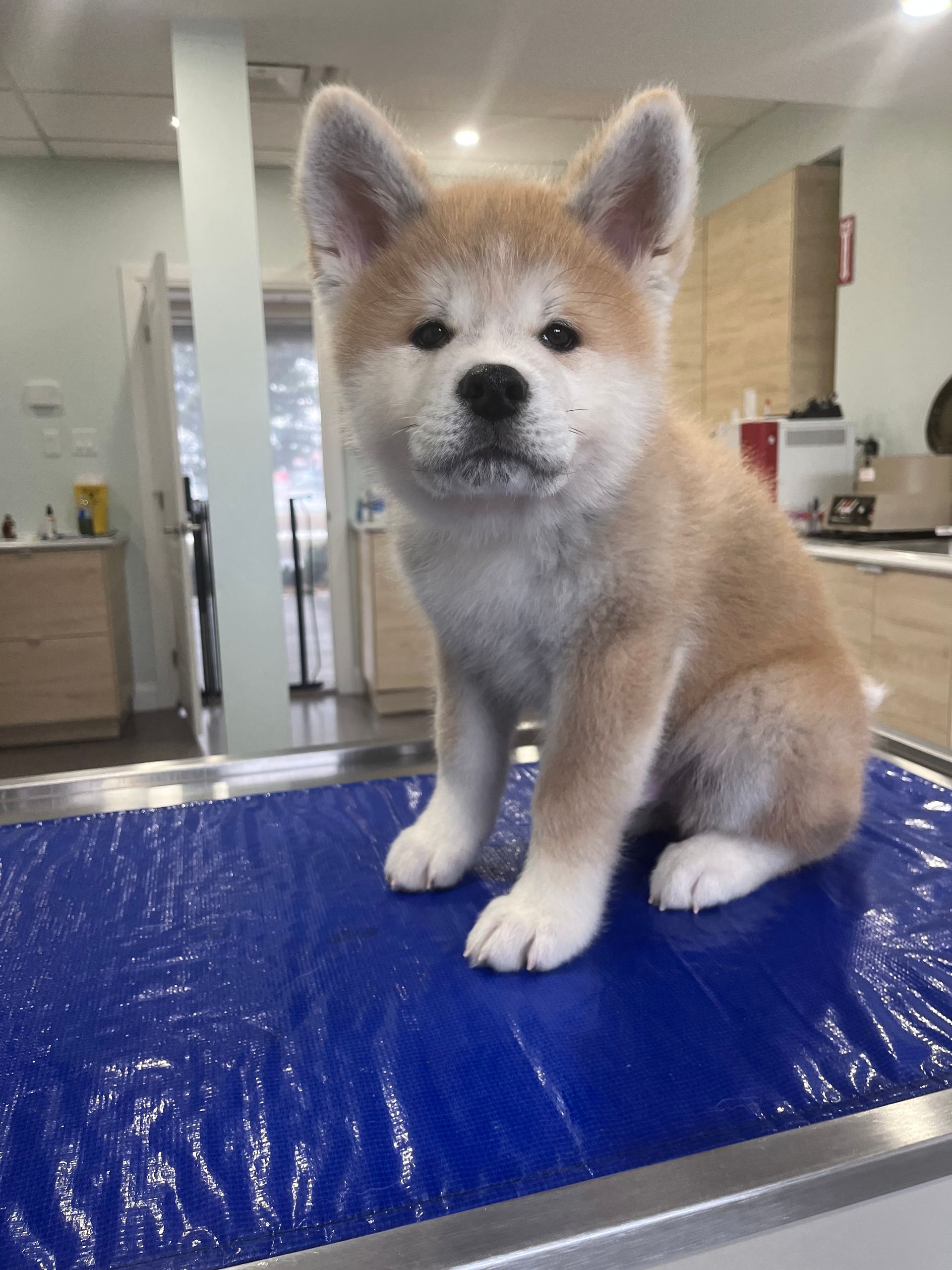The truth about anesthesia free "dentistry"
After years of anesthesia free pet dentals, this dog has lost so much bone structure due to undetected periodontal disease that the probe goes through the space between the two roots of the tooth due to bone loss. This dog ended up needing 16 teeth extracted as they could not be saved.
American Veterinary Dental College www.avdc.org/afdNew Paragraph

REMEMBER that the majority of dental disease is BELOW the gumline.
Above: Normal dental radiographs from a dog.
Photo credit: Hale Veterinary Clinic
Below: Severe bone loss
Photo credit Mariposa Veterinary Wellness Centre
Have you heard of teeth “cleaning” services without anesthesia? These services are often advertised as “safe and natural” and an option to having your pet undergo a GA. Their websites are often full of happy customers and before and after photos of pets with pearly white teeth. Unfortunately, anesthesia free dentals are NOT recommended by veterinarians and in fact are of a growing concern to the veterinary community.
Your pet’s “dental prophylaxis” at the vet is actually a Comprehensive Oral Health Assessment and Treatments (COHAT). This means that the treatment IS the cleaning. Stage 1 Periodontal Disease is gingivitis alone, without loss of attachment to the structures underneath the gum line. This means that a COHAT can actually reverse dental disease.
A veterinary Comprehensive Oral Health Assessment and Treatments (COHAT) involves:
- A thorough oral health exam by a veterinarian
- Evaluation of the surfaces of your pet’s mouth
- Cleaning and Scaling above and below the gum line followed by polishing the teeth
- Dental radiographs
Unlike humans, dogs and cats do not hold their mouths open for us to probe, examine, take radiographs (x-rays), scale and polish their teeth. This is why the procedure needs to be performed while the patient is under an anesthetic. Anesthesia is often a daunting topic to pet owners, your pet is your baby and we understand this concern. All veterinarians take general anesthesia very seriously, anesthetic protocols are designed for each individual patient’s medical needs with special consideration to their age, procedure and pain management requirements. To further minimize anesthetic risk, your veterinarian may also recommend additional tests or examinations to ensure your pet can be safely anesthetized. You can learn more about general anesthesia at M.A.C here, and of course, our team is always here to answer any of your concerns. Also remember, your pet has to be restrained while their teeth are scraped, this can be quite painful and stressful for your pet.
Additionally there are other risks to anesthesia free dentals which could result in more harm than good:
- This is because scraping teeth can be painful as there is inevitably some trauma to the surrounding gums. All of our COHAT patients, receive pain relief even though they are also undergoing general anesthesia.
- Anesthesia free dental cleanings do not identify or treat periodontal disease. However, they remove the tartar which can sometimes be an indication of underlying disease below the gum line. This means that sometimes, the visible signs of periodontal disease are removed allowing the periodontal disease below the gum line to progress too far to be able to treat and save the teeth.
Think of the tartar as the “tip of the iceberg”, if you remove the tip of the iceberg but not the whole iceberg, how can you maneuver the boat to avoid a tragedy? - Scraped teeth are a prime breeding ground for more bacteria growth which perpetuates oral disease.
- Scraping teeth of plaque and tartar does not remove the bacteria from beneath your pet’s gum line and does not decrease your pet’s risk of periodontal disease. Cleaning and scaling below the gum line is important because this is where periodontal disease is most active. This can not be done without anesthesia.
Think about what happens when you go to your human dentist. You aren’t going to your dentist to just make your teeth white. You’re going to your dentist so that they can perform a thorough oral health exam to preserve the health of your teeth. A cosmetic dental cleaning for your pet is the equivalent of a teeth whitening treatment, it does NOT preserve oral health, nor does it prevent periodontal disease.
Anesthesia free dentals are a purely cosmetic procedure which not only has NO benefit to your pet, but could worsen dental disease and gives pet owners a false sense of security because the teeth look whiter than they are healthier.
If you have concerns about your pet’s oral health. Speak to your veterinarian.
References:
Dr Amy Thomson DVM DAVDC
www.toothythomson.ca
American Veterinary Dental College
www.avdc.org/afd


Street Address : 1026 Speers Road
City : Oakville
State / Province : Ontario
Postal / Zip Code : L6L 2X4
HOURS
Monday: 9:00 am - 6:00 pm
Tuesday: 9:00 am - 6:00 pm
Wednesday: 9:00 am - 7:00 pm
Thursday: 9:00 am - 5:00 pm
Friday: 9:00 am - 5:00 pm
Saturday: Closed
Sunday: Closed
SERVICES
© Copyright 2024 - All Rights Reserved - Mac Animal Clinic | Cancellation Policy | MyPortal™



